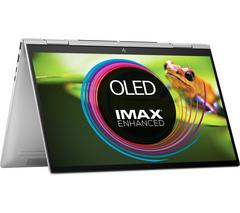Vacuum Cleaners Buyer's Guide
 Vacuum Cleaners
Vacuum Cleaners
When it comes to purchasing a new vacuum cleaner, you really have two options, either a cylinder cleaner or an upright vacuum cleaner. The upright vacuum cleaners are hoovers that are in one piece and quite rigid in design that are pushed along whilst in the standing position. Cylinder cleaners are smaller and sit on the floor and usually require you to bend your body a bit when using them.
Should I buy a cylinder or upright cleaner?
It’s often a matter of taste but each type has its own advantages. Cylinder models are smaller and are easier to use on upholstery, on stairs or around furniture, plus they are better at getting into corners. Cylinder cleaners can be more difficult to control, but do have the added advantages of coming with many difference end nosels and utensils. With their reliance on suction power they work well on hard floors.
Upright cleaners give you better control – after all, you steer them. They’re suitable for large areas of carpet as the brush combs the pile. As the dirt has less distance to travel up the cleaner, wattage isn’t as important as with cylinder.
View our range of Vacuum Cleaners
How do they work?
In cylinder cleaners the motor turns a fan, which in turn sucks up dust and dirt from the cleaning head, through the hose and into the dust bag, that is if you have a dust bag, some do some do not require you to purchase extra bags. Cylinder cleaners rely entirely on suction to draw the dust in, so they tend to be more powerful (that is, of a higher wattage) than uprights.
In upright cleaners the motor is situated in the head of the cleaner. It drives a fan which sucks up air and dust into the dust bag via a tube. The dirt is retained in the bag, and filtered air passes over the motor before it is pushed out of the cleaner. As well as suction power, upright cleaners have revolving, belt-driven brushes and sometimes an agitator beater bar that help to loosen and sweep up ingrained dirt from the carpet.
Bag or bagless?
Cleaners that require bags are usually cheaper than bagless models but you have the added expense of purchasing additional bags, plus later on it can be hard to find the specific bags you need. Some have self-sealing bags, making disposal less messy – and a boon for allergy sufferers.
With a bagless cleaner there’s no fuss with inserting fresh bags, and though the technology makes the initial outlay expensive, in the long run they can be cheaper. Some bagless models are easier and cleaner to empty, and come with anti-bacterial protection which substantially reduces house dust mite and cat allergen content. These models carry the British Allergy Association seal of approval.
View our range of Vacuum Cleaners
Type of flooring
The main type of flooring your home has should dictate the type of cleaner you buy:
- Wooden, tiled or vinyl: cylinder cleaners are best.
- Loop pile carpet: either, but make sure you turn any turbo roller attachment off as it may flatten or damage the pile.
- Cut pile carpet: upright, or cylinder with a turbo brush attachment.
Filters
All cleaners have some form of filtration system but there are some models that have more sophisticated filters or ones suitable for those with either allergies or pets.
- Stage filters: usually vary between 3 and 7 stages. A typical 4-stage filter would comprise a double-skinned bag (2 stages), a filter between the dust bag and motor chambers, and a final filter.
- Lifetime filters: no need to change the filter during the lifetime of the machine – normally 7-10 years.
- HEPA (High Efficiency Particulate Air): also known as S-Class, these retain even the smallest of allergy-causing particles. Look out for those machines that have been given the British Allergy Foundation’s seal of approval.
- Charcoal filter: with a charcoal layer that removes any nasty smells. Particularly suitable if you have pets.
View our range of Vacuum Cleaners
Power and wattage
The higher the wattage the more powerful the cleaner, but this is more important on cylinder machines as the dust has further to travel up the tube. It’s not just the wattage though: airflow and the design of the machine help improve the suction power as well. On upright cleaners it’s the type of brush that makes more of a difference. Many models have variable power – useful on upholstery, curtains or rugs.
Attachments
Most cleaners come with three attachments: crevice tool, upholstery and dusting brushes. Some machines have an additional turbo brush, often powered separately, for extra suction. They’re good on cut pile carpets and for picking up pet hairs. For wooden or tiled floors consider a horsehair/parquet brush. For hard-to-reach areas look to see if the cleaner has an extendable tube. Most vacuum cleaner manufacturers such as Dyson also do a full range of extra attachments that you can purchase.
Other points to consider
- Bag capacity: these vary enormously. Opt for a larger capacity if you have a big area to vacuum.
- Cable length: if you have a large house then look at the length of cable supplied.
- Weight: important for less able people or if there are stairs involved.
- Watts: the higher the wattage the more powerful the motor
- Hose length: longer reaching maybe better if you want to hoover the stairs
Popular Vacuum Cleaner Brands
Some of the most popular and well respected models to look at are either Miele or Dyson vacuum cleaners. But there are many others, with most of the main brands producing a cleaner model, such as Electrolux, Panasonic, Morphy Richards, Russell Hobbs, Samsung, Hoover and Vax.
View our range of Vacuum Cleaners
All reviews and buyers guides are © copyright FindElectricals.co.uk and cannot be published or used by other people without express written permission


